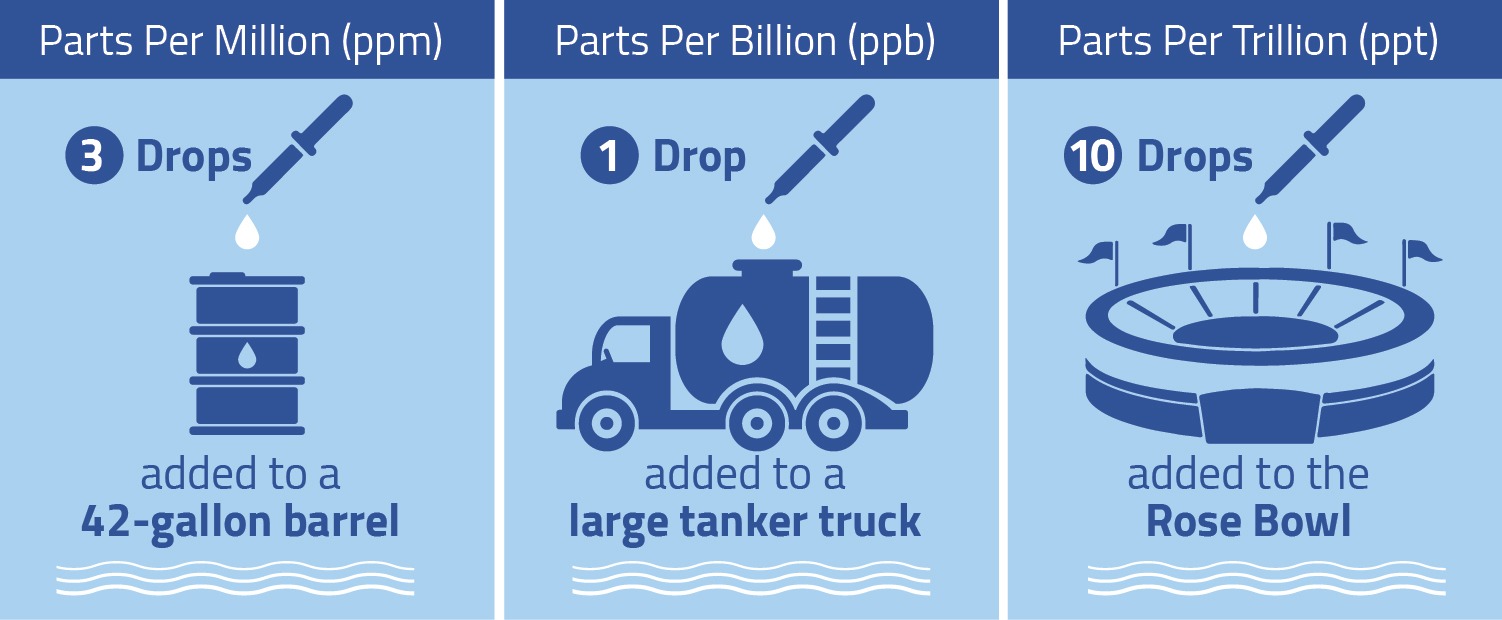What are PFAS?
Per- and polyfluoroalkyl substances (PFAS) are a group of manufactured chemicals historically used in many household and commercial products including nonstick cookware, stain repellants and waterproofing. They are or were also used in industrial applications such as in firefighting foams and electronics production. PFAS do not readily break down in the environment which is why they are often referred to as “forever” chemicals. Over time, PFAS accumulate in people’s bodies and could potentially cause a range of health issues.
Two well-known PFAS chemicals are perfluorooctanoic acid (PFOA) and perfluorooctane sulfonic acid (PFOS). These were phased out of production in the United States in 2000 but are still found in the environment. Newer PFAS like hexafluoropropylene oxide-dimer acid (commonly known as GenX), are now used in their place.
On April 10, 2024, the U.S. Environmental Protection Agency (EPA) announced the final National Primary Drinking Water Regulation for these types of PFAS. The regulation calls for a maximum contaminant level (MCL) for:
- PFOS: 4 parts per trillion (ppt)
- PFOA: 4 ppt
- PFHxS: 10 ppt
- PFNA: 10 ppt
- GenX (HFPO-DA): 10 ppt
Water systems must begin monitoring for these PFAS within three years (2027), and must comply with the regulation within five years (2029).
Studies indicate that long-term exposure to PFAS over certain levels could have adverse health effects, including developmental effects to fetuses during pregnancy or breastfed infants; cancer; or liver, immunity, thyroid, and other effects. Potential health impacts related to PFAS from all sources (which also include food wrappers, firefighting foam, and non-stick cookware, for example) are still being studied, and research is still evolving on this issue.
How does PFAS get into drinking water?
As PFAS products are manufactured, they can deliver PFAS into our natural environment and into drinking water supplies.
What is MWC doing to address PFAS?
Middlesex has been monitoring drinking water for PFAS since 2008. When PFOA levels were detected above the New Jersey limit at one of its wellfields, MWC successfully implemented treatment utilizing granular activated carbon (GAC) at its Park Avenue wellfield facility. This capability has well positioned us to better respond to this new EPA regulation and to treat surface water at our Carl J. Olsen water treatment plant.
What is MWC currently doing to ensure compliance with new Federal Standards issued on April 10, 2024?
- MWC is working with the New Jersey Department of Environmental Protection and the New Jersey Water Supply Authority, to conduct a PFAS level study, which includes weekly sampling and analysis in the Delaware & Raritan Canal, our surface water supply.
- MWC is underway with our engineering consultant to complete the preliminary engineering work to evaluate the most effective and appropriate PFAS treatment strategies at this facility.
- MWC has already commenced identifying potential private or public funding sources for the plant upgrades necessary to meet the EPA new requirements.
Where can I find more information about PFAS in the drinking water supply?
At the national level, the U.S. EPA has implemented drinking water standards for six PFAS and is gathering more information on these and other PFAS chemicals. More information can be found at the U.S. EPA’s Final PFAS National Primary Drinking Water Regulation.
PFAS health effect information can also be found on the U.S. Centers for Disease Control and Prevention (CDC) website.
MWC PFAS results are included in our Water Quality Reports which can be found under Water Quality on our website.


